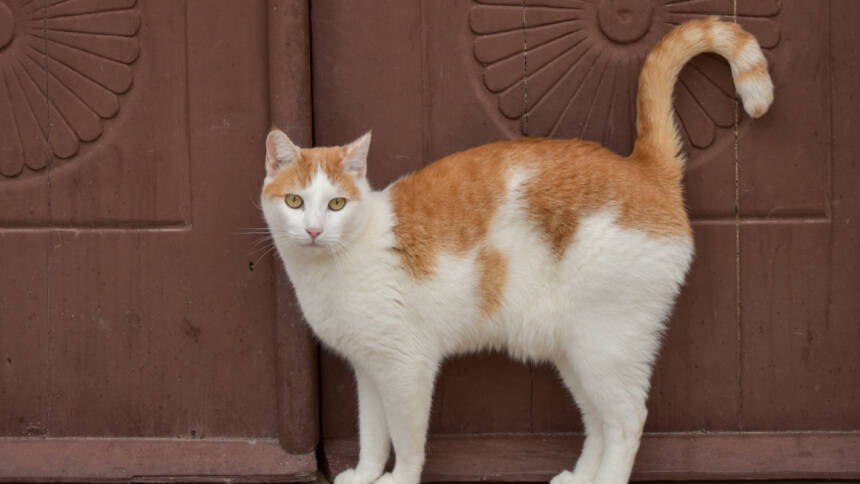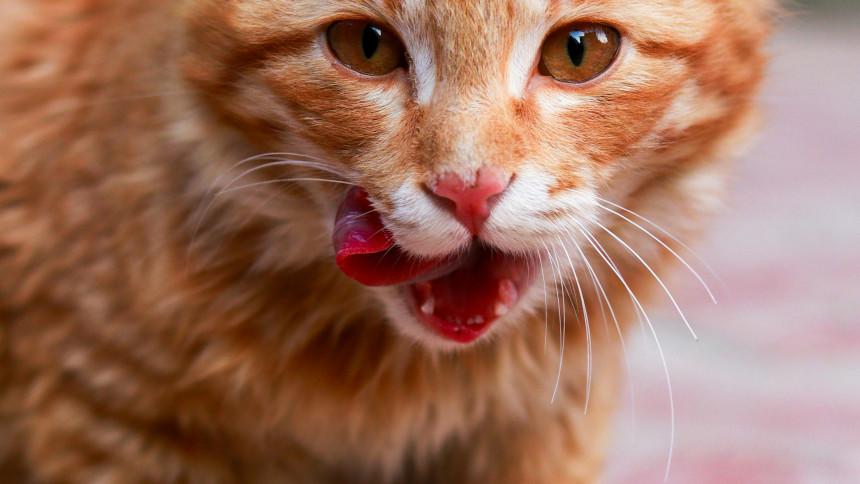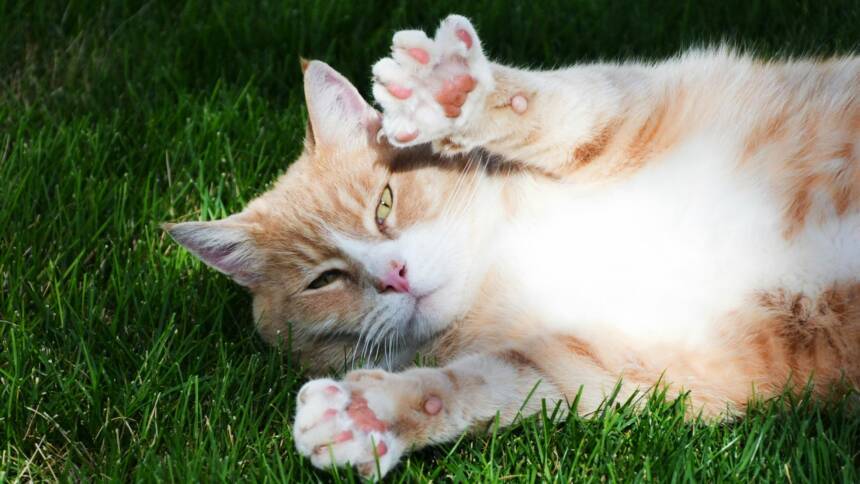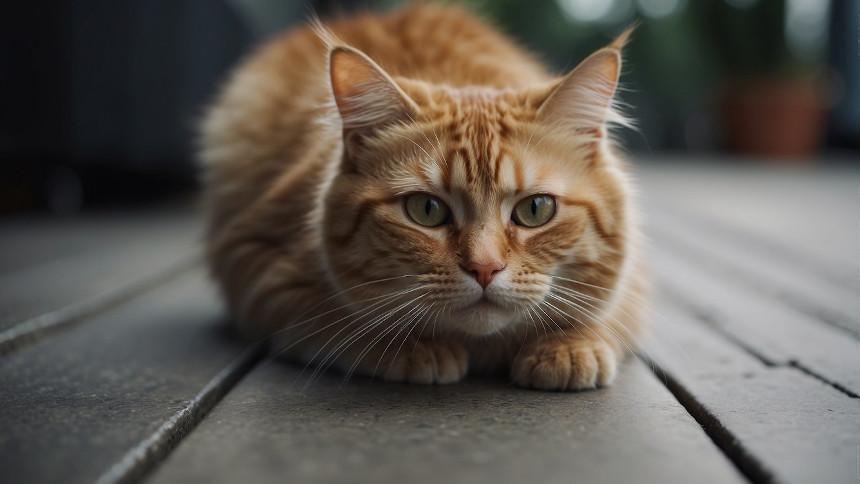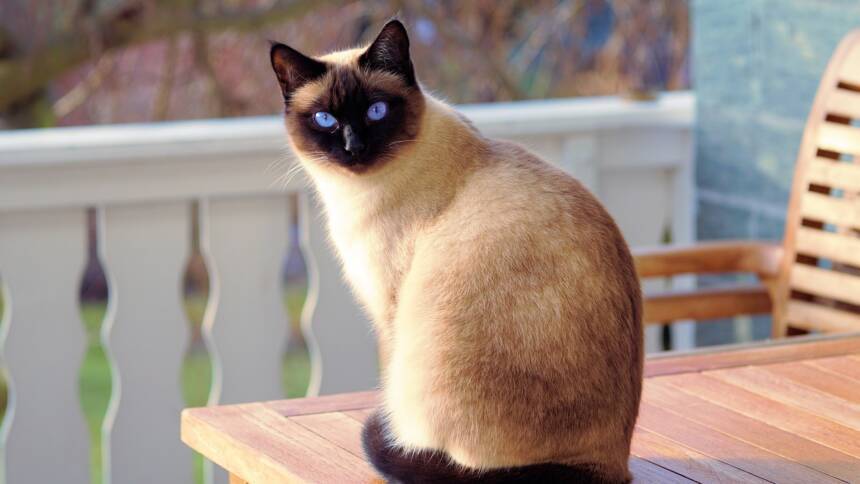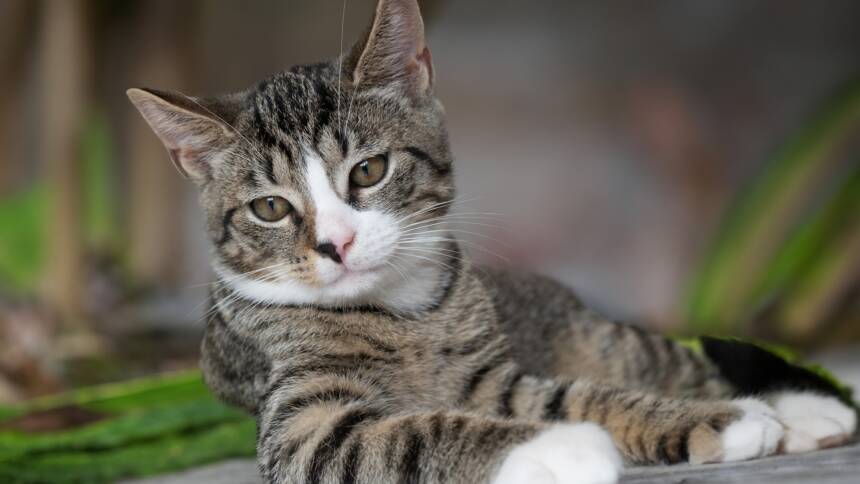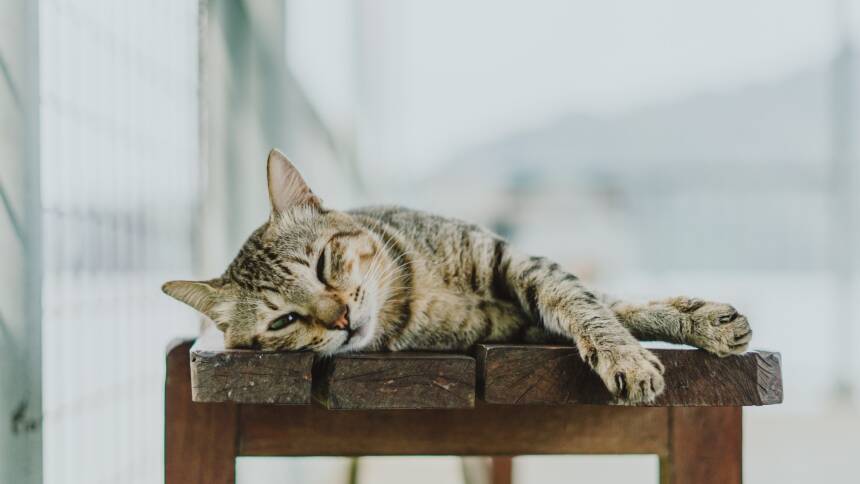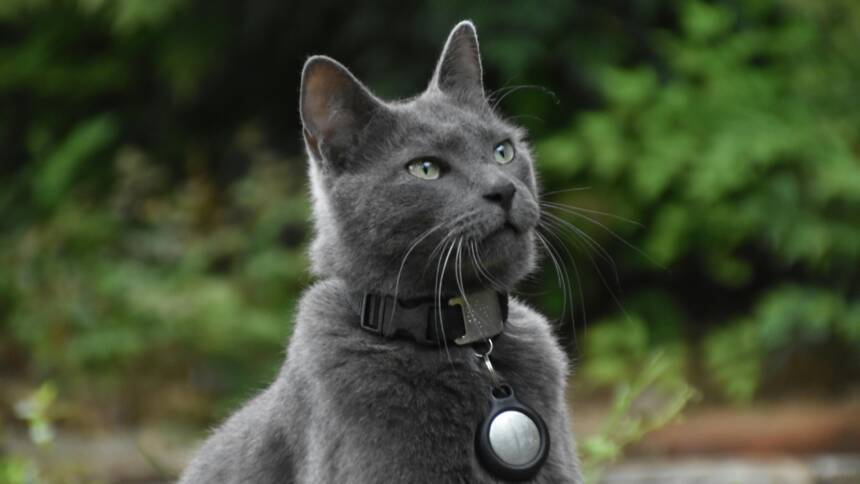Cat owners often find themselves trying to decipher the subtle cues of their feline companions’ body language. One of the most expressive parts of a cat is its tail. A tail shaped like a question mark, standing upright with a distinctive curl at the end, is a communication signal that cat owners can learn to interpret. This particular tail posture typically suggests that a cat is in a friendly, playful mood, indicating its willingness to engage with humans or other cats.
Understanding the question mark tail, along with other tail positions, can greatly improve the way owners interact with their cats. It’s like knowing a secret language that can deepen the bond between feline and human. When a cat approaches with its tail curved in this manner, it is usually an open invitation for interaction, whether it be petting, play, or conversation. Recognizing this and other tail signals allows cat owners to respond appropriately to their pet’s mood and needs.
Understanding Cat Tail Language
Cats communicate a rich variety of information through the subtleties of their body language, with the tail being one of the most expressive parts. Specific tail positions and movements can convey emotions and intentions that, once understood, can greatly enhance the communication between felines and humans.
The Question Mark Tail
The question mark tail—where the tail stands upright and curls at the tip—is a distinctive posture in a cat’s body language repertoire. This tail position often signals a friendly and inquisitive disposition, suggesting a cat may be open to interactive play or exploration.
Tail Positions and Emotions
The tail of a cat can assume many positions, each linked with different emotional states:
- Tail Straight Up: When a cat holds its tail high, it typically denotes confidence and contentment. A twitch at the tip can be an extra indicator of happiness.
- Tail Wagging: Unlike dogs, a cat with a quickly wagging tail may express irritation or anger, prompting caution from observers.
- Swishing Tail: A slow, swaying tail movement can indicate a cat is focusing on an object of interest, possibly assessing a situation or preparing to pounce.
- Thrashing Tail: Sudden, violent movements of the tail can suggest severe agitation and a defensive warning not to approach.
Communication Through Tail Movements
Cats use tail movements as a powerful means of communication, both with humans and other animals. The subtlety of a tail twitching or a tail thrashing can deliver clear messages about a cat’s immediate emotions:
- Twitching Tail: Light twitches may be a cat’s way of showing minor irritation or increased concentration on something.
- Thrashing Tail: More intense thrashing is often a sign that a cat is agitated and may need space.
Recognizing these cues is crucial for understanding and respecting a cat’s feelings and behavioral responses.
The Emotional Spectrum of Cats
Cats display a wide range of emotions through their body language, especially their tails. Understanding these cues allows for better interpretation of their feelings and needs.
Signs of a Relaxed Cat
Cats exhibit a sense of relaxation through a slightly curved or neutral tail position. They often have a soft gaze and slow blinking to signal comfort and trust. Their ears will be in a neutral position, neither flattened nor pointed sharply.
- Body language indicators:
- Tail slightly curved or relaxed
- Soft gaze with slow blinking
- Neutral ear positioning
Indicators of Stress and Anxiety
Stress and anxiety in cats can be noticed when they display a tucked tail, flattened ears, and dilated pupils. They may also show agitation or fear by excessively grooming themselves or by becoming withdrawn. Pacing and vocalizing more than usual can be signs of distress.
- Observations of stress:
- Tucked tail under the body
- Ears flattened back
- Pacing or hiding
Display of Affection and Contentment
A cat’s tail curved in the shape of a question mark typically reflects playfulness and a friendly invitation. Purring, a quiet rumbling vocalization, is another common sign of contentment and affection. Cats may also nuzzle or rub their heads against a person or another cat to show friendship and love.
- Behaviors of affection:
- Tail curled like a question mark
- Audible purring
- Nuzzling or head-rubbing
Cat Behavior and Interactions
Cats communicate a complex range of emotions and intentions through their tails. Notably, a tail curved like a question mark often signifies a playful or curious demeanor, inviting more in-depth observation of their social and behavioral patterns.
Playful Behaviors
When a cat’s tail forms a question mark, it is a strong indication of a playful mood. This tail position is an invitation to interact; the cat may be open to play or is simply expressing a joyful state. Behaviors accompanying this tail sign can include:
- Pouncing: A sign of a playful chase or mock attack in a safe and friendly context.
- Kneading: This comforting action can be playful when coupled with a relaxed environment and soft purring.
It is important to approach a cat with a curved tail respectfully, matching their energy and allowing them to dictate the terms of play.
Aggression and Submission Signs
Although a question mark-shaped tail typically conveys a positive mood, it is vital to consider the entire body language to detect signs of aggression or submission. Observe the following:
- Ears flat against the head: Indicative of aggression or fear.
- Hissing or growling: Clear auditory signs that the cat feels threatened and may act defensively.
Conversely, submission can be signified by a tail tucked away or wrapped around the body, glaringly distinct from the confident, raised question mark tail.
Social Behaviors and Friendship
A cat with a question mark tail often signals a willingness to engage socially, potentially reflecting both curiosity and a desire for friendship. In a social context, such cues might include:
- Approaching with a relaxed gait: A sign of trust and an invitation for social interaction.
- Meowing softly: Communicates a desire for attention and companionship.
A cat’s tail is a barometer of their social intentions, where the curved, upright tail serves as an emblem of amicable behavior and congenial interaction. Recognizing these signs is key to understanding and nurturing a bond with a cat.
Physical Interpretations of Feline Mood
Cats communicate complex emotions through body language, particularly involving their tail and fur, as well as facial expressions and body posture. Observing these subtle cues enables a deeper understanding of a cat’s feelings and intentions.
Tail and Fur Language
Tail Position:
- Erect Tail: Indicates confidence and contentment; a straight-up tail can signal happiness and friendliness.
- Puffed Up Tail: Often a sign of fear or aggression; the cat is attempting to appear larger to ward off threats.
- Curved Tail Resembling a Question Mark: Suggests playfulness and happiness; commonly seen when a cat is in a good mood and interacting with humans.
- Tail Wrapped Around Their Body: Can be a sign of relaxation or cautiousness, depending on the context.
Fur Texture:
- Raised Fur: When the fur on a cat’s back is standing on end (piloerection), it often indicates a frightened or agitated state.
- Smooth Fur: A sign of calmness, where the cat feels comfortable and at ease.
Facial Expressions and Body Posture
Facial Expressions:
- Flattened Ears: Can indicate fear, aggression, or irritation.
- Relaxed Facial Features: Generally a sign of contentment and trust.
Body Posture:
- Arched Back: When accompanied by fur standing on end and flattened ears, it suggests aggression or fear.
- Calm Posture: A relaxed body with a neutral spine reflects a comfortable and content feline.
Understanding these physical cues is essential for interpreting a cat’s mood and strengthening the human-cat bond.
Health and Well-being Indicators
The tail of a cat provides valuable insights into its health and emotional well-being. Certain tail movements can be clear indicators of a cat’s physical health, revealing signs of illness or contentment. Observing these signs allows caretakers to better understand and care for their feline companions.
Signs of Feline Illness
When a cat’s tail hangs low or tucks between its legs, it can be a sign that they are not feeling well. Tail twitching or swishing can sometimes indicate pain or distress, rather than the playful intent it usually signifies. If a cat’s tail movement accompanies a lack of appetite or avoidance of cat food, it might point towards illness.
A cat’s tail may also puff up as an involuntary reaction to fear or upset, not just when it’s threatened or agitated. This reaction may also occur when a cat is not feeling well. Caretakers should observe if tail puffing happens frequently or in situations where the cat usually feels safe, as it could indicate discomfort or pain.
Tail Movement and Physical Health
The tail is an extension of a cat’s spine, so movements can reflect overall physical health. For example, if a cat’s tail is limp or unable to attain its characteristic question mark shape—a sign of a playful and curious disposition—this might suggest a physical ailment or injury.
When a cat holds its tail up with a slight curve at the end, it is typically a sign of a relaxed and healthy cat. However, any significant changes in usual tail activity, such as unforeseen lethargy or over-agitation, can be a reason for concern and warrant a veterinary consultation. Careful monitoring of a cat’s tail—how it moves, its position, and the context—can provide early indicators of health issues that may need to be addressed.
Toys and Activities for Cats
Cats exhibit a range of behaviors, such as playfulness and inquisitiveness, which can be encouraged and nurtured through the right toys and activities. It is important for cat owners to select toys that stimulate their pets both mentally and physically.
- Interactive Toys: Toys that require a cat to think and move are excellent for enhancing concentration. Puzzles or toys that hide treats inside encourage problem-solving and keep a cat engaged.
- Chasing Toys: Laser pointers and wand toys can induce excitement and mimic the thrill of the hunt. These toys allow cats to exercise their natural predatory instincts.
- Scratching Posts: To maintain their claw health and mark territory, cats need appropriate scratching posts. These not only serve a practical purpose but can also be a source of enjoyment.
Cats may also enjoy toys that cater to their curiosity:
- Balls and Mice: These simple toys can provide hours of entertainment as cats investigate and chase them.
- Catnip Toys: Infused with catnip, these playthings can trigger a burst of energy and playfulness, followed by a period of relaxation.
To ensure safety, always supervise cats during play and check toys regularly for signs of wear and tear. Engaging in play with one’s cat fulfills their instinctual needs and strengthens the bond between pet and owner. It is the responsibility of the owner to provide a variety of toys and activities that cater to their cat’s unique personality and preferences.
The Science of Cat Tails
In this section, we’ll explore the intricacies of a cat’s tail, revealing its complex anatomy and vital role in feline balance and mobility.
Anatomy of the Cat Tail
The cat tail is a fascinating extension of the feline spine. Typically comprising between 19 and 23 bones known as caudal vertebrae, it represents a continuation of the spinal column. These bones are connected by a series of muscles, tendons, nerves, and ligaments, covered by skin and fur. The muscles within the cat’s tail enable a wide range of articulate movements, allowing cats to convey their emotional state. A cat displaying its tail in a question mark shape often shows curiosity or a playful attitude, reflecting a state of contentment and friendly confidence.
The Role of the Tail in Balance and Mobility
The tail serves as a counterbalance apparatus to aid in a cat’s mobility and agility. When a cat navigates narrow spaces or makes sudden changes in direction, the tail acts as a rudder, helping to maintain balance. It’s particularly important for cats when they are climbing or making leaps. The precise control over their tail movements allows cats to correct their orientation mid-air during a fall, contributing to what is often referred to as the “righting reflex.” Such control is essential for a cat’s survival as it allows them to land on their feet and minimize injury.
During various movements, whether leaping, walking on thin ledges, or making sharp turns, the tail helps cats maintain equilibrium, demonstrating a sophisticated synergy between bones, muscles, and neural impulses.
Cat Communication with Humans
Cats frequently communicate with humans through their body language, particularly with their tails. A cat’s tail can be a strong indicator of their emotional state and intent. Here is how they do it:
- Affection and Love: If a cat approaches a human with its tail erect and slightly curved at the end, resembling a question mark, this typically signifies a friendly greeting. They may be in an especially playful mood or seeking attention.
- Curiosity: Cats are naturally inquisitive creatures. When a cat is focusing on an interesting object or is alert to something new in its environment, it may hold its tail straight up with a slight curve, indicating concentrated curiosity.
- Mood Indicators: The question mark position can also reflect a cat’s relaxed state and willingness to interact. However, a tail that thrashes back and forth signals that a cat may be irritated or agitated.
- Warning Signs: Should a cat feel threatened or frightened, its tail may puff up. Along with other body language cues, such as a lowered stance and ears pinned back, this warns humans and other animals to keep their distance.
| Tail Position | Likely Emotion | Interaction Indication |
|---|---|---|
| Erect with a curve | Playfulness, Love | Cat is friendly and open to engagement |
| Vibrating | Extreme Affection | Close bonding moment, often during greeting |
| Thrashing back and forth | Irritation, Frustration | Proceed with caution or give space |
| Puffed up | Fear, Agitation | Likely frightened; avoid further stress |
Understanding these cues helps in strengthening the bond and friendship between humans and their feline companions. It is crucial for cat owners to observe these tail signals in combination with other behaviors to accurately interpret their cat’s communication efforts.
